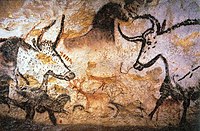
A tip of the hat to evolutionary change
Sign Up to like & getrecommendations! Published in 2017 at "Nature"
DOI: 10.1038/d41586-017-07440-0
Abstract: &NA; The relative roles of biological and environmental factors in driving evolutionary change have been unclear. Now fossil analysis shows that their action depends on where an animal group is in its evolutionary trajectory. See… read more here.
Keywords: change; evolutionary change; tip hat; hat evolutionary ... See more keywords

Comparative analysis of the multivariate genetic architecture of morphological traits in three species of Gomphocerine grasshoppers
Sign Up to like & getrecommendations! Published in 2019 at "Heredity"
DOI: 10.1038/s41437-019-0276-1
Abstract: Evolutionary change is the change in trait values across generations, and usually occurs in multidimensional trait space rather than along isolated traits. Genetic covariation influences the magnitude and direction of evolutionary change and can be… read more here.
Keywords: species gomphocerine; evolutionary change; morphological traits; three species ... See more keywords

An evolutionary change in ligand
Sign Up to like & getrecommendations! Published in 2019 at "Science"
DOI: 10.1126/science.364.6444.966-a
Abstract: Steroid Hormones Aldosterone binds to mammalian mineralocorticoid receptors to regulate electrolyte homeostasis. However, the mineralocorticoid receptor first arose in cartilaginous fish, which do not have aldosterone. Katsu et al. found that the mineralocorticoid receptor of… read more here.
Keywords: mineralocorticoid receptor; change ligand; physiology; evolutionary change ... See more keywords

A theory of rapid evolutionary change explaining the de novo appearance of megakaryocytes and platelets in mammals.
Sign Up to like & getrecommendations! Published in 2022 at "Journal of cell science"
DOI: 10.1242/jcs.260286
Abstract: Platelets are found only in mammals. Uniquely, they have a log Gaussian volume distribution and are produced from megakaryocytes, large cells that have polyploid nuclei. In this Hypothesis, we propose that a possible explanation for… read more here.
Keywords: cell; change; evolutionary change; megakaryocytes platelets ... See more keywords